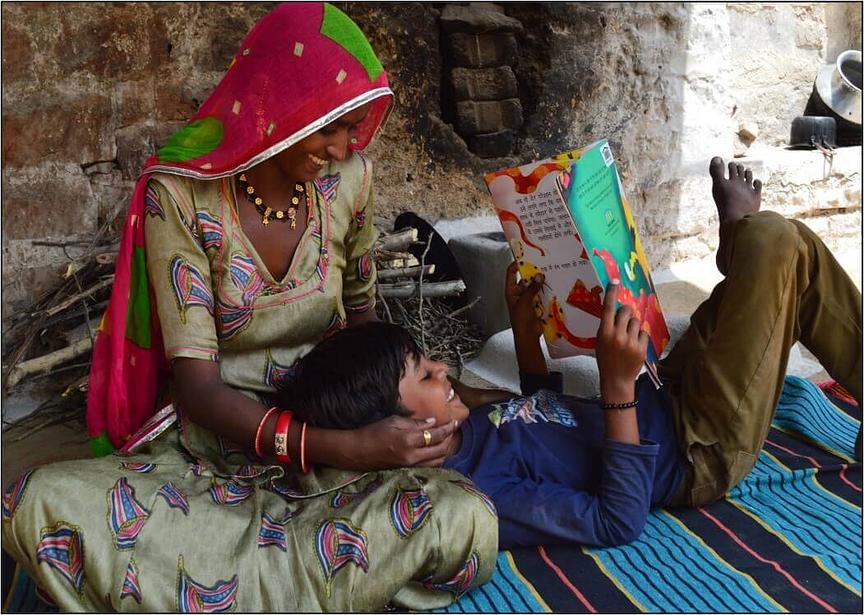COVID-19 pandemic triggered sever learning loss due to school closure. Parents from marginalized communities had low levels of literacy and were engaged in daily wage livelihood leaving them with little time to support their children's education at home. HLS facilitated by parent and family, aimed to support children with self-learning resources enabling them to continue learning at home.
The program was designed to be simple, age-appropriate, using a blended approach that keeps children engaged and interested in learning at homes. Implementation strategies differed between Rajasthan and Jharkhand. While Rajasthan adopted a volunteer-led delivery where volunteers were trained to support parents regularly through community level learning sessions and help decoding learning activities, in Jharkhand, government schoolteachers reached out to parents during PTA, SMC meetings and home visits. The activities were engaging and helped parents, especially mothers, realize that learning is much more than only being able to read and write. Resources like parents’ calendar helped mothers to keep track of their children’s progress, keeping the focus centered on children’s continued learning. Internal monitoring report suggested that about 90% of the parents helped their children in completing worksheet activities at home, thus, increasing parents' ownership of their children's edu.
The HLS program in its pilot phase shows a positive influence in both intervention states. Parents, who once considered children’s education limited to schools, began realizing their roles and responsibilities in this educational journey.
In Rajasthan, internal monitoring report indicated 80% increase in parents regularly reading stories and engaging with children based on the content received from school.
In Rajasthan, the Department of Education plans to regularize volunteer engagement to support different education projects implemented at the schools. In Jharkhand, the Education Department has already translated the parent activity calendar in 5 local languages (viz. Kururkh, Khariya, HO, Mundari and Santhali) and printed those for distribution to over 27 lakh children.
Broader Step can be taken
- Socio economic analysis of community is required.
- Contextual materials to be prepared.
- Can be multimodal products
- Intense implementation and supportive monitoring mechanism
- Program Monitoring and documentation of learnings and sharing with different system stakeholders


